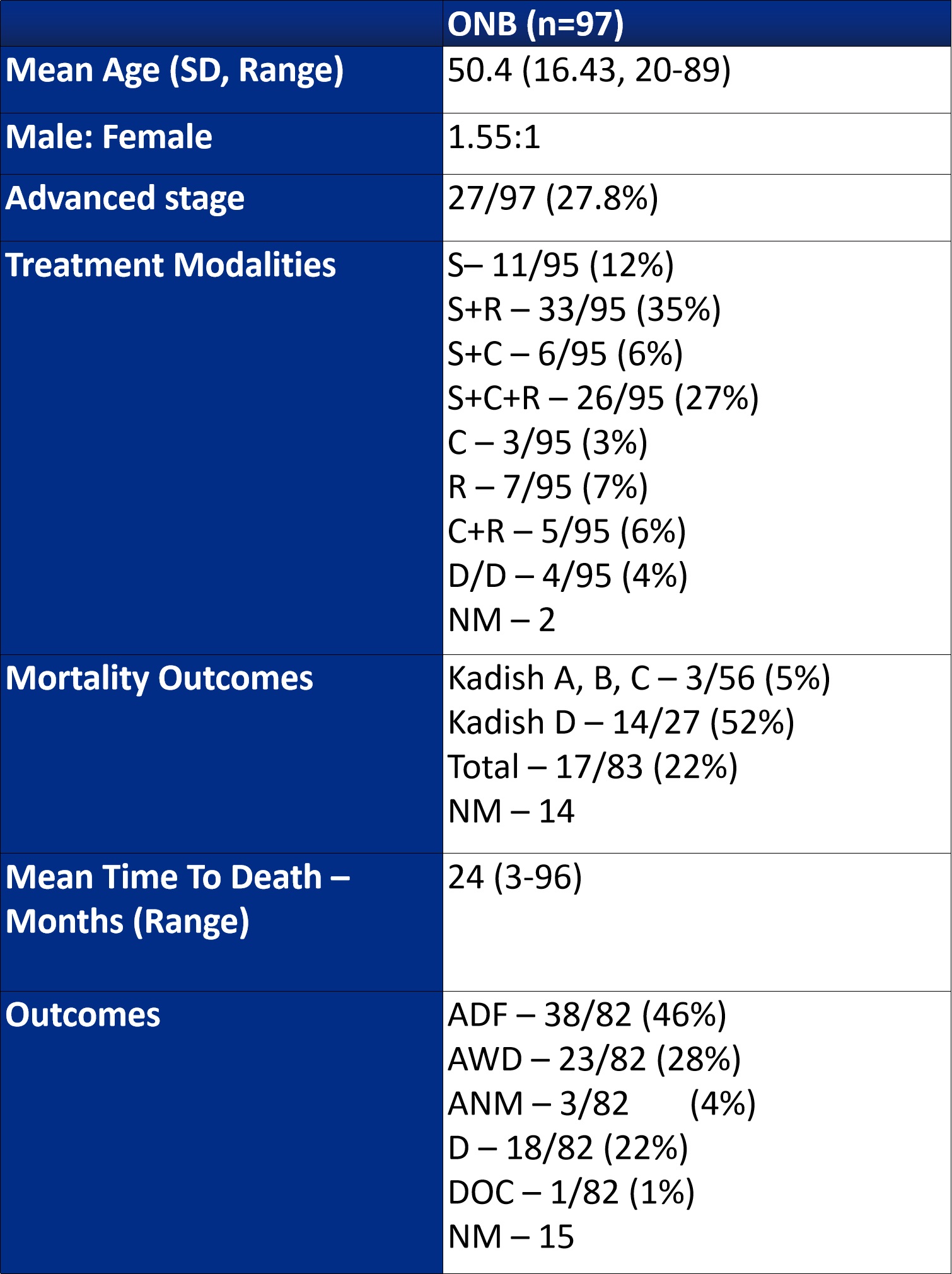Background: Olfactory neuroblastoma (ONB), first described in 1924 by Berger et al., is a rare neoplasm that represents nearly 3% of malignant sinonasal neoplasms. It arises from the olfactory epithelium and tends to invaders local structures and metastasizes to various body organs. Given its diverse ad controversial management strategies, this review investigates the clinical and pathologic characteristics, treatment, and prognosis of ONB in adults.
Methods: PubMed, ScienceDirect, Scopus, and Google Scholar literature search for the published data on ONB adults (19+ years) for the period 2000 – 2020.
Results: The male: female ratio for the 97 included cases was 1.55:1. The mean age at diagnosis was 50.4 years ( range 20-89 years). The most common primary location was sinonasal in 60% of cases. The most common treatment modalities were, in descending order, surgery with radiation, followed by surgery with chemoradiation, and surgery alone in 35%, 27%, and 12% of cases, respectively. The most common treatment modality in metastatic cases was surgery with chemoradiation in 50% of cases. The mean time to death was 24 months ( range 3-96 months). Out of patients with available data, 27 (27.8%) patients presented with advanced disease, with a mortality rate of 52%. Additionally, of the cases with reported data, 64 (78%) patients were alive and 18 (22%) were deceased.
Conclusions: ONB is a rare malignancy with high mortality, especially in advanced disease. This review will further improve our understanding of the demographics and clinical characteristics of ONB, which would potentially improve survival outcomes by promoting multidisciplinary management approaches.

